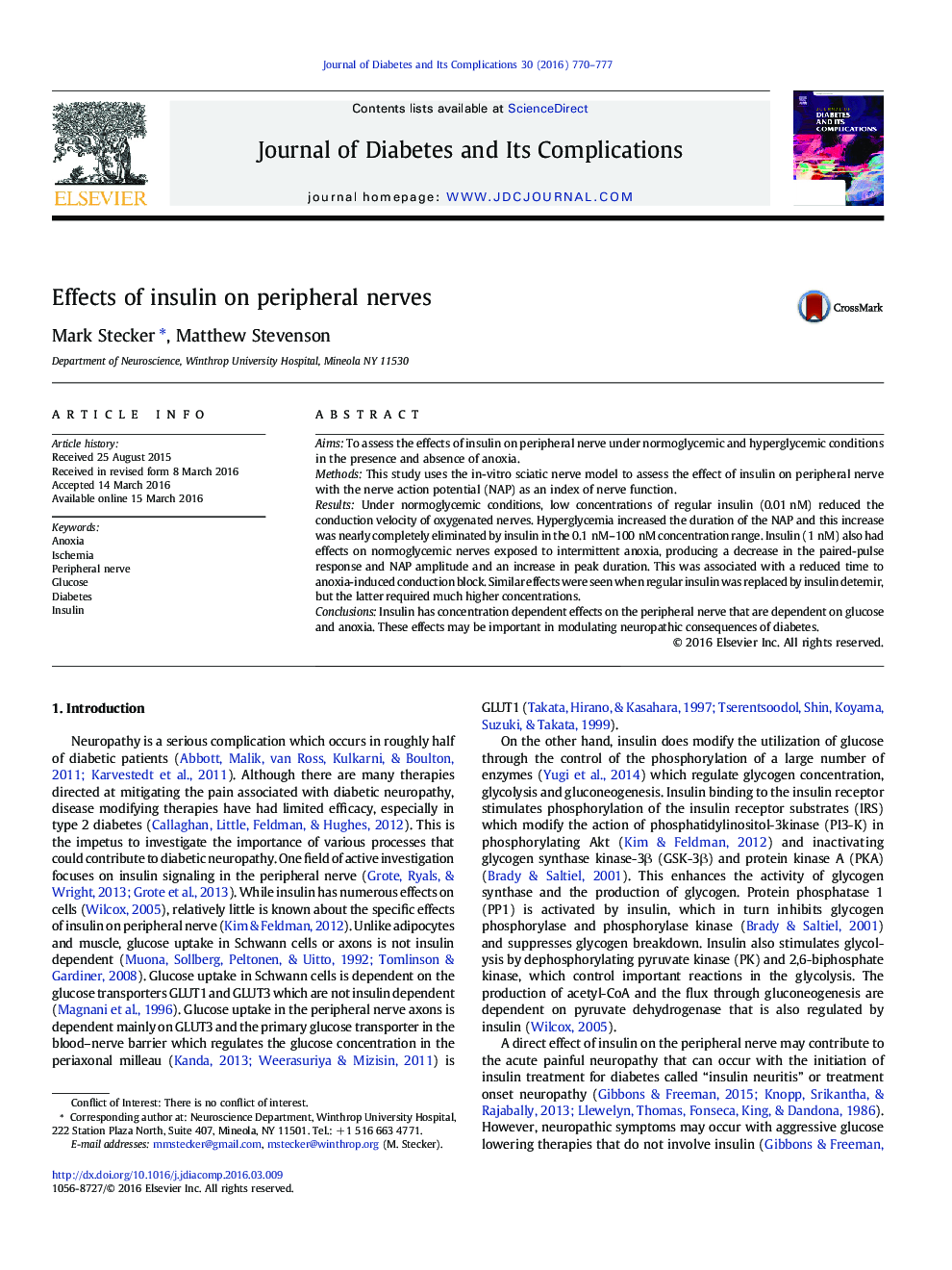| Article ID | Journal | Published Year | Pages | File Type |
|---|---|---|---|---|
| 2804075 | Journal of Diabetes and its Complications | 2016 | 8 Pages |
AimsTo assess the effects of insulin on peripheral nerve under normoglycemic and hyperglycemic conditions in the presence and absence of anoxia.MethodsThis study uses the in-vitro sciatic nerve model to assess the effect of insulin on peripheral nerve with the nerve action potential (NAP) as an index of nerve function.ResultsUnder normoglycemic conditions, low concentrations of regular insulin (0.01 nM) reduced the conduction velocity of oxygenated nerves. Hyperglycemia increased the duration of the NAP and this increase was nearly completely eliminated by insulin in the 0.1 nM–100 nM concentration range. Insulin (1 nM) also had effects on normoglycemic nerves exposed to intermittent anoxia, producing a decrease in the paired-pulse response and NAP amplitude and an increase in peak duration. This was associated with a reduced time to anoxia-induced conduction block. Similar effects were seen when regular insulin was replaced by insulin detemir, but the latter required much higher concentrations.ConclusionsInsulin has concentration dependent effects on the peripheral nerve that are dependent on glucose and anoxia. These effects may be important in modulating neuropathic consequences of diabetes.
